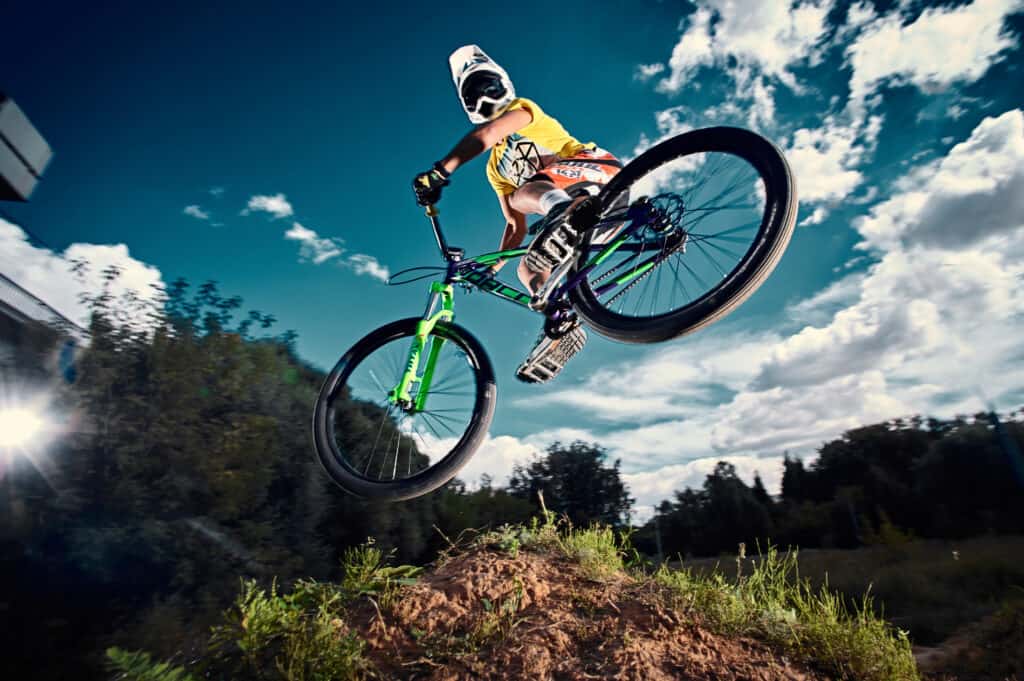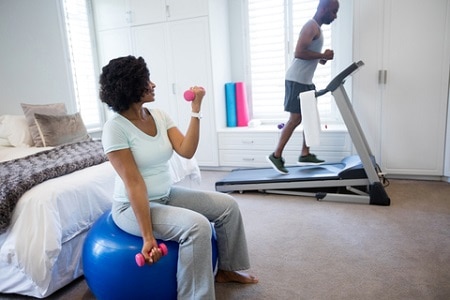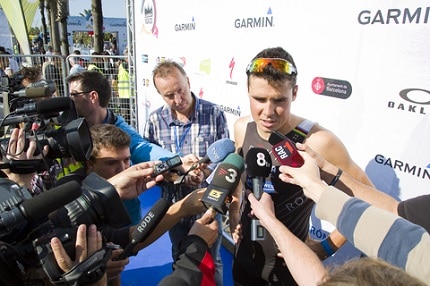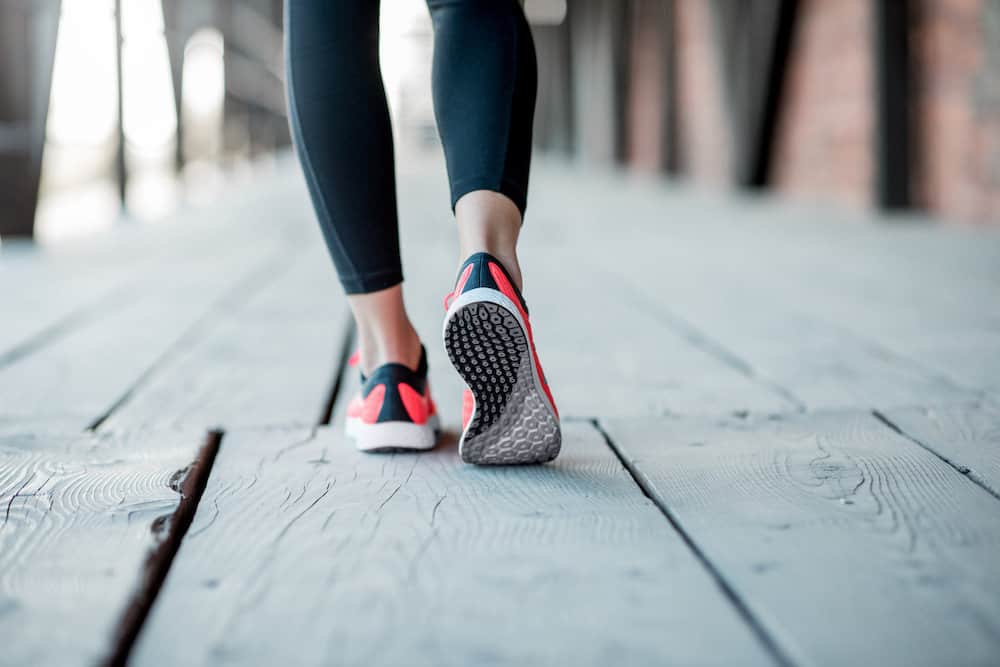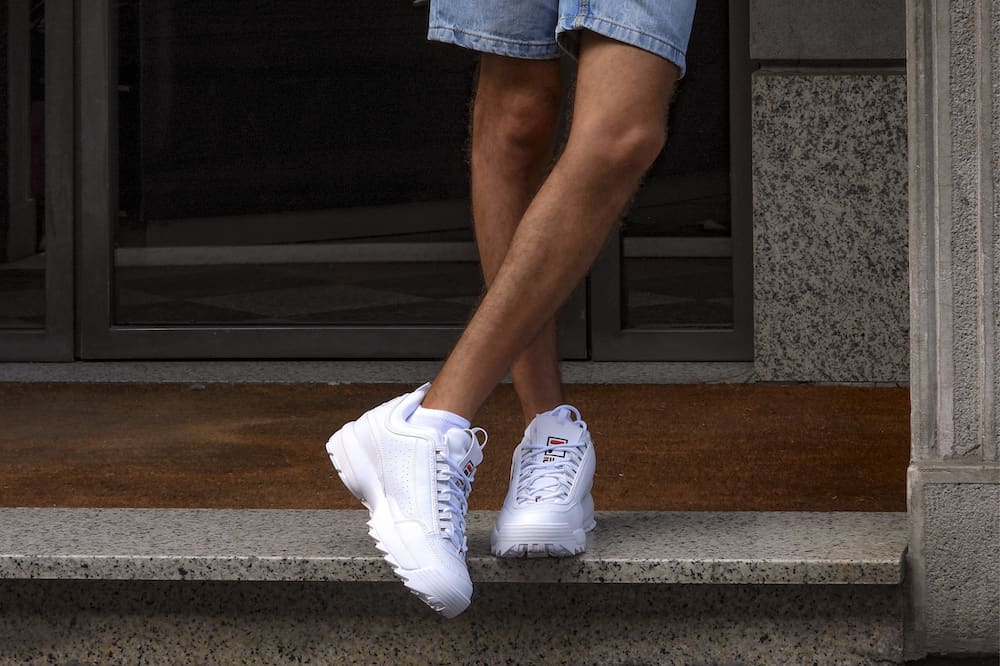An improperly fitting helmet or incorrectly worn can seriously compromise its efficacy. This article explores how and when to wear a full-face helmet to ensure your safety. One incidence is all it takes for inadequate protection or ignorance to become costly.
How Should You Put on a Full-Face Helmet Correctly?
Before wearing a full-face helmet,
-
First, relax any straps/ratchets to place the helmet on your head easily.
-
Put the helmet on and tweak the straps to fit. The front of the helmet should be just above your eyebrows.
-
Fasten the ratchets until the helmet fits perfectly around your head. It should be snug so that any movement, especially when you nod your head, will not make you uncomfortable.
Putting the Helmet Strap Together
Fasten your full-face helmet strap as follows:
-
Verify the chin strap has just the right amount of slack to make it secure without being too tight.
-
Also, verify that it is securely attached to restrict movement in the case of a crash.
-
Lock the straps and adjust them across your chin and sides for a perfect fit.
You’re good to go if the tightened straps don’t make you uncomfortable or cause the helmet to move.
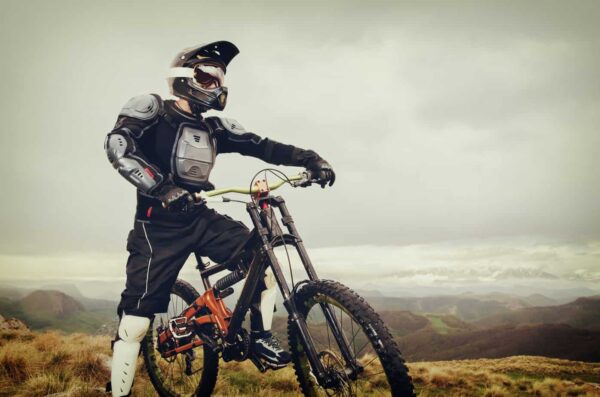
Mistakes People Make when Wearing a Full-face Helmet
Below are some helmet-related errors that riders often make:
-
Placing the full-face helmets too far back
Some bikers expose vast forehead regions instead of aligning the helmet with the front of their heads. Wearing a helmet in this fashion severely affects its functionality.
-
Wearing thick beanies beneath their helmets
While it could be tempting to wear a heavy cap beneath your helmet (during cold days), doing so puts your safety at risk. It bars the helmet from fitting correctly. If you put on a thick cap, the helmet could rest too high, making it unsafe to wear.
-
Placing the helmets too far up
Some riders place their helmet’s rear at a slightly higher position, covering large parts of their forehead and affecting their field of vision. Generally, the helmet’s rear should be slightly lower than the front to cushion the head. The reason why some riders choose to bend this rule is never clear. Perhaps it’s to do with style.
There’s nothing wrong with looking ‘cool,’ but your safety comes first. Always use the adjustable mechanism if you need to place your helmet’s rear at a slightly higher position.
Choosing the Correct Helmet Size
It would be best if you bought a helmet of the right size to get the right fit. Your head circumference will be your guiding tool. Standard helmets vary from 50 to 60 cm because head shapes may differ.
To be sure of the size, use a fabric tape measure. Round the tape, measure horizontally around your head (slightly above your eyebrows and ears), and record the reading. Knowing your head’s diameter can determine what helmet size you need.
The fit may be adjusted later, but picking the right size at first is crucial.

Choosing the Correct Helmet Type
In several sports, the kind of helmet used is vital for protection. Finding the perfect fit is critical, but it is not sufficient. MTB helmets, for example, have a peak to shelter you from low branches and rainfall and can descend further for more protection.
Visors are available on certain urban helmets to keep the sun and rain out of your eyes. However, visors are not used for road biking helmets because they may obstruct your field of view if you pedal hard on the drops.
Nonetheless, the helmet you end up with depends on whether you prefer a convertible or a dedicated full-face helmet. Have a look at a detailed review of some of the best helmets in this article.
Convertible vs. Dedicated Full-Face Helmets
Goggles and Glasses
None of these fit goggles better than the other. But if we had to rank them, we would say that the dedicated helmets do better than the convertible helmets. This is mainly because of the motor-style visors of dedicated helmets like “POC.”
When it comes to fitting glasses, we think they’re all equal. However, it will depend on the glasses you have. So, that’s up to you to test your glasses on each one.
But let’s go back to the visors for a second. The Super 3R (convertible) is the only one on the market with a standard mountain bike visor. The Super DH (convertible) has a motor visor, while the POC helmet has a motor visor with breakaway points.
Closure Systems
Most convertible full-face helmets like the Super 3R have a typical mountain bike helmet clasp system. The mechanism is simple: push to connect, pinch to release. Other convertible helmets have a magnetic framework where you get them close together, lock them, and slide them apart to release.
Dedicated helmets use a more robust version of the typical mountain bike. It’s worth noting that the dedicated full-face helmet is the most comfortable to wear and remove.
The straps on some convertible full-face helmets are not smooth and soft as the dedicated full-face helmets. They can make your ears uncomfortable as you wear and remove them.
MIPS and the Spin Technology
Both bell helmets come with MIPS, but some dedicated full-face helmets like POC come with their spin technology. But, there are differences between the MIPS on the two Bell helmets.
The Super 3R uses a standard MIPS, whereas a Super DH uses a new type of MIPS where they have the pads attached to a thin foam shell. That thin foam shell moves independently of the outer helmet shell.
It works well, but it’s not all skittles and rainbows.
While they do move independently of each other, they still touch. They produce a sound of high-density foam moving against another piece of high-density foam. Well, imagine that sound happening millimeters away from your ears while inside a small echo chamber.
You will feel like you are on a speaker, listening to horrible foam rubbing sounds. We should also mention that the Super 3R isn’t a very quiet helmet either. But it certainly isn’t enough to make us think of it as a negative. The POC, on the other hand, is dead silent.
Ventilation
Some convertible full-face helmets like the Super 3R let in plenty of air with 23 vents, while others like the Super DH have 19 vents. Most dedicated full-face helmets like the POC have 18 vents. However, dedicated and convertible full-face helmets are reasonably close to each other in keeping you cool.
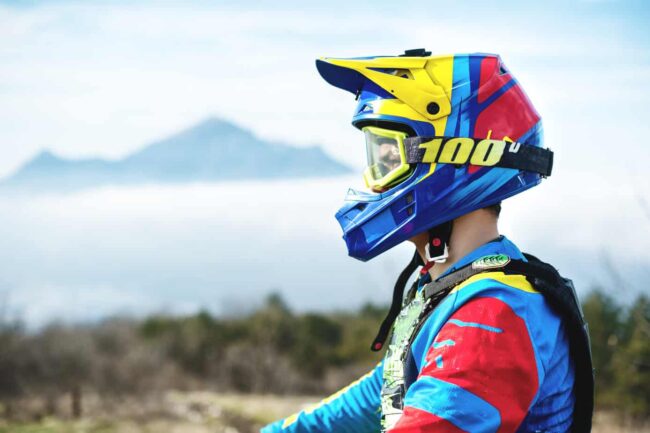
Extra Features
All convertibles have removable chin bar features and a nice helmet bag. On the contrary, dedicated full-face helmets come with neoprene pad replacements, not cheek pads. However, convertible helmets differ when it comes to padding. For instance, the Super D H comes with thin replacement pads and cheek pads, but the Super 3R does not come with any replacement pads.
On some dedicated full-face helmets, you can remove the cheek pads while the helmet is on. The aim is to minimize potential damage when removing the helmet from an injured rider.
Some convertible full-face helmets also have a sweat guide. It’s supposed to collect the sweat from your forehead and channel it to a sweat pad area. It drips away from your face, not into glasses or goggles.
It is pretty impressive how well this mechanism works. You have to choose the level of protection you want.
Dedicated full-face helmets feel like motor helmets and are priced reasonably well. Convertible full-face helmets feel like a nice downhill mountain bike helmet but are somewhat expensive.
We can’t have a lack of a helmet keeping a good shredder down. Therefore, if you prefer a convertible full-face and it’s the one you can afford, buy it and enjoy the ride. But if money is not a concern, we believe that the best fitting helmet is the one you should buy.
The Importance of Wearing a Full-Face Helmet
Helmets designs are meant to reduce the danger of severe head and brain damage in the unfortunate event of an accident. According to recent studies, full-face helmets have decreased the risk of sustaining head injuries by 51%, major head injuries by 69%, and fatal head injuries by 65%. These statistics are impressive but can only be improved through proper helmet use.
A helmet may no longer provide the level of protection it intended if it’s not fitted or positioned correctly. With a few quick modifications, you can be sure that you’ve done everything to protect yourself during a ride.
People Also Ask:
-
Can You Hear with a Full-Face Helmet?
Full-face helmets do affect the sound. Even while stationary, they dampen wind noise and function like enormous earplugs. You can hear, and others can listen to you talk, albeit both may be muted.
-
Is a Full-Face Helmet Worth it?
If you feel like the risk of a face plant is gigantic, then a full-face helmet is worth it. A full-face helmet will give you the confidence to jump, go fast and tackle a tricky trail. And in the event of an impact or accident, you are guaranteed relatively more protection.

